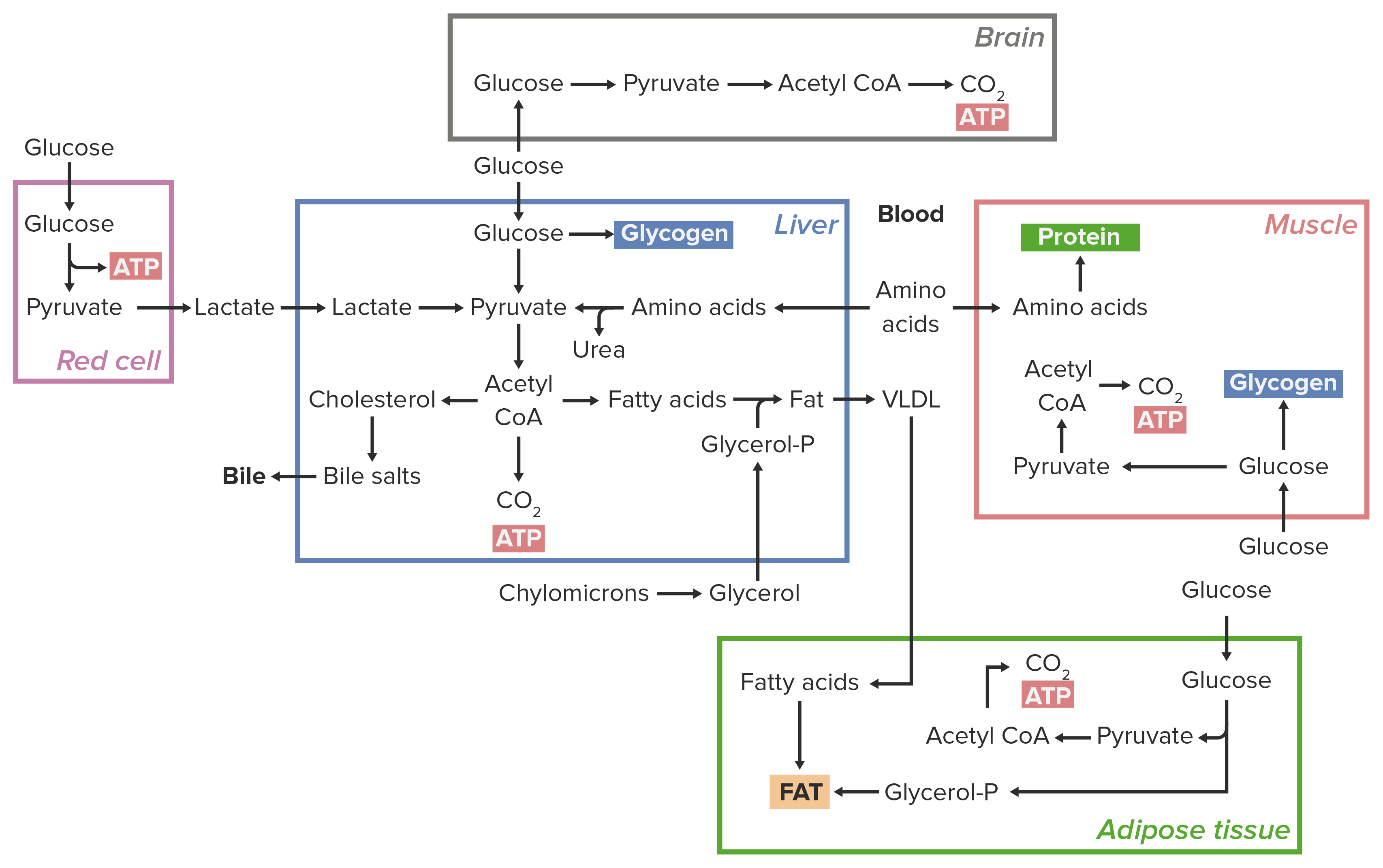Playlist
Show Playlist
Hide Playlist
Laws of Thermodynamics
-
Slides 14 EnergyEnzymesMetabolism CellBiology.pdf
-
Download Lecture Overview
00:01 So now that we've recalled that, let's think about the two Laws of Thermodynamics. 00:06 The second one is of particular interest to us but it doesn't hurt to have an understanding of both. 00:11 The first law of thermodynamics states that energy is not created or destroyed, that means that energy is maintained consistently through systems. It may change form but it still exists. 00:24 So for example, and this isn't a closed system, an earth is not exactly a closed system. 00:30 But imagine that it is for a moment, and we have energy from the sun, which is passed on to the grass as it photosynthesizes and captures carbon molecules and puts them together to form carbohydrates. 00:42 And those carbohydrates, the grass is eaten by our zebra, and the zebra will then pass on its energy to a lion, a carnivore. 00:52 So we have this scheme on life of the energy pyramid in which each level we lose some energy from the biomass. 01:01 So grass will have ten times the energy of the zebra, and the zebra will have ten times the energy stored in its biomass as the lion will eventually get. 01:10 But what happens to all of these other energy forms? So we have biomass as potential energy, and then we have the processes that say the zebra does throughout its life as it walks around and runs away from the lion, so on and so forth. 01:29 And ten percent on average the ecological rule of efficiency, ten percent of the energy that the zebra consumed will end up in its biomass. 01:39 The other ninety percent fuels the zebra's life. So it consumes the grass and transforms the energy, stores it into ATP, and uses the ATP to breath and so on and so forth. 01:51 The same thing happens at the level of the lion. It puts ten percent of the zebra into its biomass and the rest of it is creating energy that the lion can use in the form of ATP to go about his daily business. 02:06 So energy, in the first law of thermodynamics, energy is neither created nor destroyed. 02:12 We will see that there is always energy although it may change forms in a closed system. 02:19 Naturally we lose some energy as heat, and it makes its way out into space and goes who knows where, but energy is not ever going to be destroyed. 02:30 Now the second law of thermodynamics states that disorder is always increasing in universe. 02:39 Now it can be a little hard of a concept to wrap your head around but I consider, have you ever had a situation in your house where the kitchen constantly becomes messier and messier, and it takes a lot of thought and energy to get it together to put it all back together. 02:59 It takes energy input to reorganize systems. 03:03 Not all of the energy that you put into reorganizing the system though is going to available. 03:09 So much like this pile of bricks, if we want to organize it into a wall, we have to put in some energy. 03:15 Now we could knock down that wall and release some energy as gravity drags the bricks back towards the ground but not all of the energy is going to be usable energy. 03:25 And so this brings us into biological systems in which we have energy before a reaction and energy after a reaction. Some of it is usable. 03:37 For example, all the energy from the sun came into this plant, and the plant photosynthesize and build some glucose molecules in the form of carbohydrates. 03:46 Most of that energy is usable in the form of carbohydrates, but some of it was probably released as heat or other unusable energy forms. 03:55 We have free energy being the unusable energy, we call it entropy. 04:01 Entropy actually represents that portion of the work that is unavailable for doing purposeful work and can be thought of as the randomness in a system.
About the Lecture
The lecture Laws of Thermodynamics by Georgina Cornwall, PhD is from the course Energy, Enzymes and Metabolism.
Included Quiz Questions
Which of the following is implied by the second law of thermodynamics? Select all that apply.
- All reactions result in a change in free energy.
- Disorder in the universe is always increasing.
- Not all energy resulting from chemical reactions is available to do work.
- Entropy is the energy lost to the system.
- Endergonic reactions release energy.
Which of the following is NOT correctly stated?
- There is a complete transfer of energy from one trophic level to another in the food chain.
- The first law of thermodynamics assumes a closed system.
- The first law of thermodynamics states that energy can neither be created nor destroyed; it can only be converted from one form to another.
- Entropy is the measure of disorder in an isolated system.
- According to the second law of thermodynamics, the total entropy of the universe is consistently increasing.
Customer reviews
3,0 of 5 stars
| 5 Stars |
|
0 |
| 4 Stars |
|
0 |
| 3 Stars |
|
1 |
| 2 Stars |
|
0 |
| 1 Star |
|
0 |
I believe the term is entropy is misused in this lecture.




